When facing a golf bunker, even experienced players can feel the pressure.
However, you can turn these challenges into opportunities with the right knowledge and practice.
This guide will explore how to master golf bunker shots and improve your greenside play.
Introduction to Greenside Bunker Play
What are Greenside Bunkers?
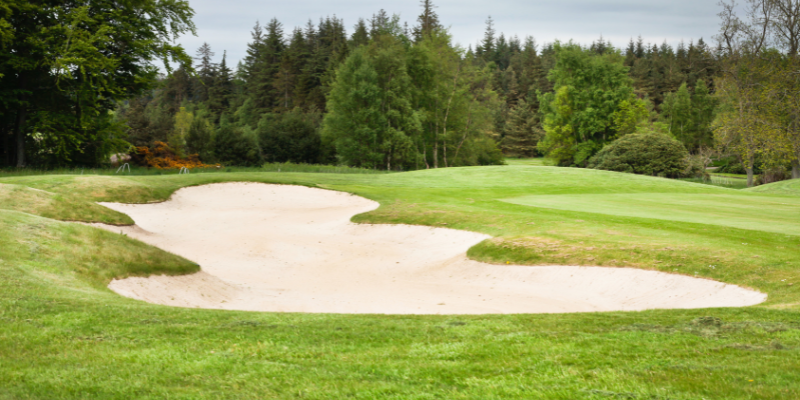
Greenside bunkers, also known simply as bunkers, are sand traps strategically placed around golf courses. Their primary purpose is to challenge golfers by penalizing inaccurate shots near the greens. Greenside bunkers are designed to make it difficult to achieve precise distance and control.
Why is Mastering Greenside Bunker Shots Important in Golf?
- Scoring Opportunities: Greenside bunkers are often the last obstacle before the green. Mastering them can provide you with opportunities to save strokes and lower your score.
- Course Management: Understanding bunker play is essential for effective course management. Knowing how to escape bunkers strategically can help you avoid penalty strokes.
- Confidence Booster: Developing competence in greenside bunker shots can boost your overall confidence on the course, leading to better performance.
Essential Equipment for Greenside Bunker Shots
Choosing the Best Wedge For Bunkers
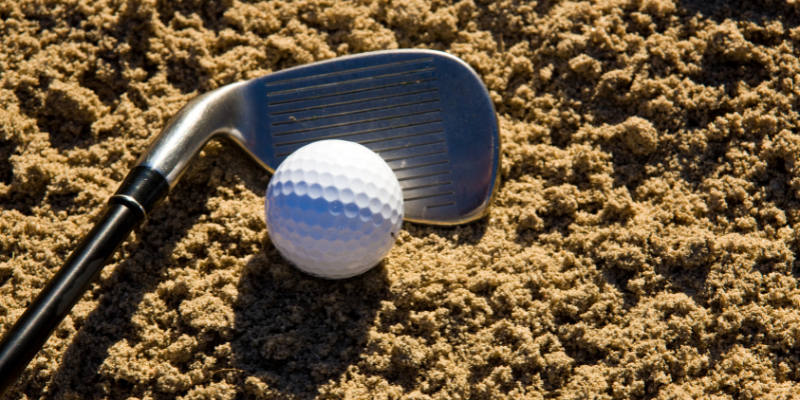
There are Different Types Of Golf Wedges. The choice of wedge plays a crucial role in greenside bunker success. Here are the key considerations:
- Sand Wedge: This is the most common choice for bunker shots. It has a high loft angle (usually 54-58 degrees) to help you get the ball up quickly.
- Lob Wedge: A lob wedge (58-64 degrees) is ideal for very soft sand or when you need to clear a high lip. It provides maximum loft and height.
- Gap Wedge: While not typically the first choice, a gap wedge (50-54 degrees) can be used in certain bunker situations.
- Grind and Bounce: Pay attention to the grind (sole design) and bounce (angle of the clubhead’s leading edge) of your wedge. Different grinds and bounces suit different bunker conditions.
Other Equipment Considerations
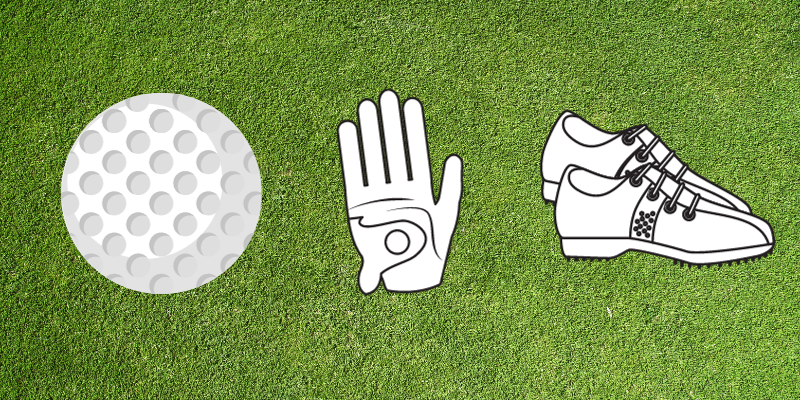
- Golf Ball: Opt for a softer golf ball with high spin when playing bunker shots. It will help you generate more spin and control.
- Golf Glove: A glove with a good grip can be beneficial, especially when trying to maintain control in the bunker sand. Explore our guide to the Best Golf Gloves for enhanced performance in the sand and beyond!
- Footwear: Golf shoes with traction are crucial for stability in the bunker.
Setup and Stance in Greenside Bunker Play
Setting up your stance correctly is crucial for successful greenside bunker play.
Proper Positioning for Success
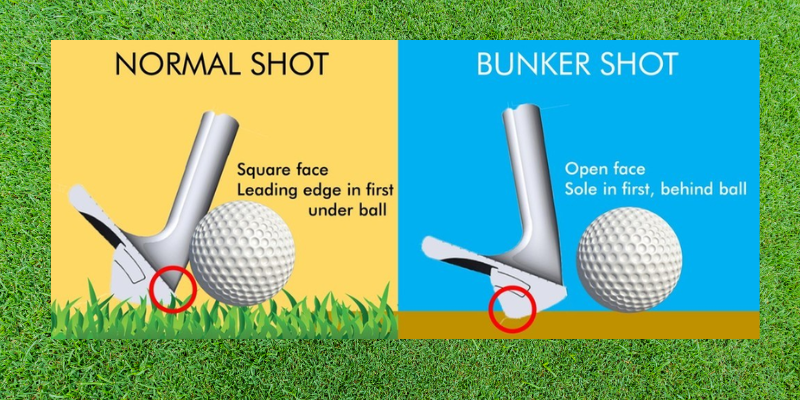
- Ball Position: Place the ball forward in your stance, closer to your front foot (left foot for right-handed players). This helps you catch the ball cleanly without hitting too much sand.
- Open Clubface: Slightly open the clubface at address. This increases the loft of the club and promotes a higher, softer shot.
- Stance Width: Widen your stance for stability, and dig your feet into the sand slightly to anchor yourself.
Adjusting Your Stance for Different Bunker Shots
- Standard Bunker Shot: Maintain a square stance with the target line, but open your stance slightly to accommodate the open clubface.
- Flop Shot: For a high, soft flop shot, open your stance even more and open the clubface dramatically.
- Bunker with a Steep Lip: In this situation, you may need to open your stance wider and take a steeper swing to clear the lip.
Swing Technique for Greenside Bunker Shots
Mastering the mechanics of a bunker shot is essential for successful greenside bunker play.
The Mechanics of a Bunker Shot

- Weight Distribution: Keep most of your weight on your front foot throughout the swing.
- Open Clubface: Maintain the open clubface throughout the swing to add loft to the shot.
- Splash, Don’t Dig: Focus on hitting the sand about an inch behind the ball. The club should enter the sand at a shallow angle and slide through it, splashing the ball out.
- Follow-Through: Allow the club to continue its path after impact. A full follow-through is essential for distance control.
Tips for a Consistent and Controlled Swing
- Practice Swings: Take practice swings to get a feel for the sand’s texture and the amount of sand you need to take.
- Rhythm and Tempo: Maintain a smooth, rhythmic tempo in your swing. Avoid rushing the shot.
- Visualization: Visualize the shot you want to execute before stepping into the bunker. This mental preparation can enhance your focus.
🏌️♂️ How to hit a bunker shot?
- Open the clubface.
- Position the ball forward.
- Aim to hit an inch behind the ball.
- Keep most weight on your front foot.
- Maintain a full follow-through.
- Practice and adapt to bunker conditions.
- Seek professional guidance for improvement.
🏌️♂️ What is the best wedge for bunkers?
A sand wedge with a loft of 54-58 degrees is ideal for bunker play.
🏌️♂️ How to hit long bunker shots?
To hit long bunker shots, use a more open clubface, a wider stance, and a longer backswing.
🏌️♂️ Any general bunker play tips?
Visualize the shot, stay confident, and trust your bunker technique to improve your success rate.
🏌️♂️ What are some bunker shot tips for beginners?
Keep a wide stance, dig your feet in, and aim to hit about two inches behind the ball.
🏌️♂️ What is the recommended ball position for bunker shots?
Approximately 1-2 inches forward of your front foot.
Reading Bunker Conditions
In golf, understanding and adapting to the conditions of the bunker can be a game-changer.
Learn how to assess various bunker situations and make the right choices to improve your greenside bunker play.
Understanding Sand Consistency and Depth
- Soft Sand: In soft sand, you need to hit the sand behind the ball to lift it out. Adjust your technique and swing accordingly.
- Hard-Packed Sand: A firmer surface requires a more shallow entry into the sand, almost skimming the surface.
- Depth of Sand: Pay attention to how deeply your ball is buried. A buried lie requires more power to extricate the ball.
How to Assess the Lie of Your Ball in the Bunker
- Visual Inspection: Carefully examine the ball’s position in the bunker to determine how much sand is between the ball and your clubface.
- Feel the Sand: Run your fingers through the sand to gauge its texture and depth.
- Practice Swings: Take a few practice swings to get a sense of how the club interacts with the sand in the specific bunker.
Greenside Bunker Shot Strategy
Developing a sound strategy for your greenside bunker shots is crucial to excel in this game aspect.
Discover effective tactics to tackle bunker challenges and enhance your overall performance near the green.
Decision-Making on Shot Selection
- Get Out Safely: In some situations, the primary goal should be simply to escape the bunker and get the ball back onto the fairway or green.
- Aggressive Play: When the lie and situation permit, consider going for the pin. Aim to get the ball close for a potential one-putt.
Strategy for Getting the Ball Close to the Pin
- Carrying the Lip: Calculate how high you need to hit the ball to clear the bunker’s lip while still reaching the target.
- Spin Control: Learn to control the backspin or topspin to stop the ball quickly or release it towards the hole.
Common Greenside Bunker Mistakes to Avoid
Bunkers can be intimidating, but understanding common mistakes and how to correct them is essential for improving your greenside bunker play. Let’s take a closer look at potential pitfalls and find golf bunker tips to address these errors:
Pitfalls to Watch Out For in Bunker Play
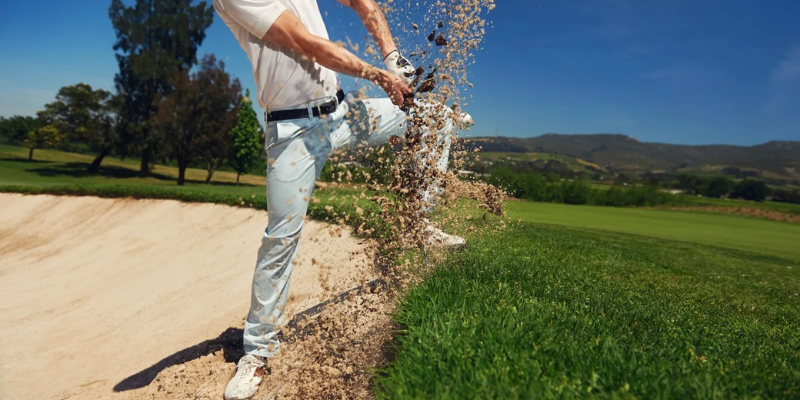
- Hitting Too Much Sand: One of the most prevalent mistakes is digging too deep into the sand. Striking too much sand before the ball results in a heavy shot that doesn’t escape the bunker effectively.
- Leaving the Ball in the Bunker: Failing to carry the ball far enough out of the bunker is another common error. Your goal should be to clear the bunker’s lip and land the ball safely on the green.
- Overcompensating for a Buried Lie: When dealing with a buried lie, some golfers tend to swing too hard in an attempt to extricate the ball. This can lead to poor results, including hitting the ball too far or not getting it out of the bunker at all.
How to Correct Common Errors
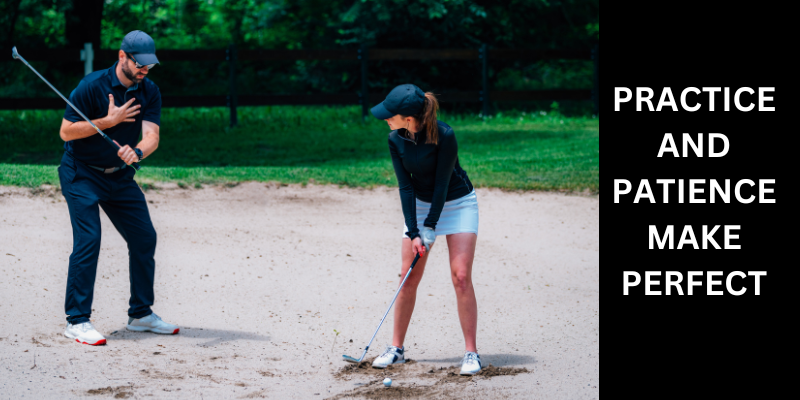
- Practice and Patience: Consistent practice is the primary remedy for eliminating common bunker mistakes. Spend time in the bunker, experimenting with various techniques and lies. Gradually, you’ll develop a better feel for how the sand interacts with the clubface.
- Seek Professional Guidance: Consider taking lessons from a golf instructor who specializes in bunker play. They can provide personalized feedback, drills, and tips to help you improve your technique.
Practice Drills and Tips
Effective drills and practice routines are essential for refining your greenside bunker play. Here are some valuable drills and tips to consider:
- Footprint Drill: Before hitting bunker shots, step into the bunker and make a few practice swings, paying attention to the depth and shape of your footprints. This helps you get a sense of the sand’s consistency and how it affects your swing.
- Distance Control Drill: Place a towel or a marker at various distances from the bunker’s edge. Practice hitting bunker shots to specific targets to improve your distance control.
- Upside-Down Club Drill: Turn your sand wedge upside-down and use the handle to practice your swing. This drill helps you focus on the club’s interaction with the sand and encourages a shallow entry.
- Ball Position Experimentation: Experiment with different ball positions in the bunker to see how it affects the trajectory and distance of your shots. Finding the right ball position for various bunker conditions is crucial.
Advanced Techniques for Greenside Bunker Shots
Once you’ve mastered the basics, consider exploring more advanced techniques for greenside bunker shots:
- Flop Shots: The flop shot is a high, soft shot that can be useful when you need to carry a bunker with a steep lip. To execute a successful flop shot, open the clubface further, hinge your wrists fully, and make a steep swing with an accelerated follow-through.
- Spin Control: Professional golfers often rely on spin control to get the ball close to the pin from greenside bunkers. By opening the clubface slightly and using a high-spin golf ball, you can impart more backspin or topspin on the ball, allowing it to check up or release toward the hole as needed.
Troubleshooting Greenside Bunker Scenarios
Bunker conditions can vary greatly, and knowing how to adapt is crucial. Here’s what to do when faced with challenging bunker scenarios:
- Hard-Packed Sand: On courses with firmer bunkers, adjust by taking a shallower entry into the sand. This prevents you from digging too deep and allows for a clean escape.
- Wet Sand: Wet sand tends to compact and become heavy. Take a firmer stance and swing more aggressively to generate enough lift and distance.
- Firm Lips: If you encounter a bunker with a steep lip, consider using a more lofted club and opening the clubface further to ensure you clear the lip and reach the green.
Famous Greenside Bunker Shots in Golf
It’s inspiring to learn from the pros who have showcased their greenside bunker skills on the biggest stages of golf:
Phil Mickelson – 2010 Masters: Mickelson’s remarkable shot from the pine straw and greenside bunker at the 13th hole during the final round of the 2010 Masters is legendary. It set up an eagle and ultimately secured his third Masters victory.
Seve Ballesteros – 1983 Open Championship: Seve was known for his extraordinary short game, and he showcased it at the 1983 Open Championship. His brilliant escape from a bunker during the final round led to a crucial par and secured his victory.
These iconic moments remind us that mastering greenside bunker golf can make a significant difference in one’s golfing journey.
Conclusion
In conclusion, mastering golf bunker shots and greenside play is key to improving your golf game. With the right skills and practice, you can confidently handle bunkers. Dedicate time to refining your technique, and you’ll see lower scores and greater enjoyment on the course.
So, the next time your ball lands in a golf bunker, apply the knowledge and skills from this guide to conquer the challenge and watch your game improve.